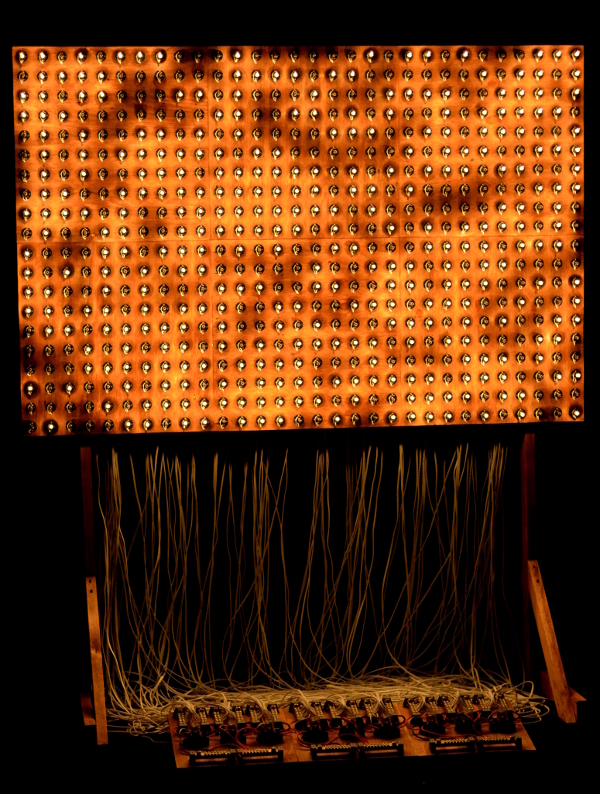
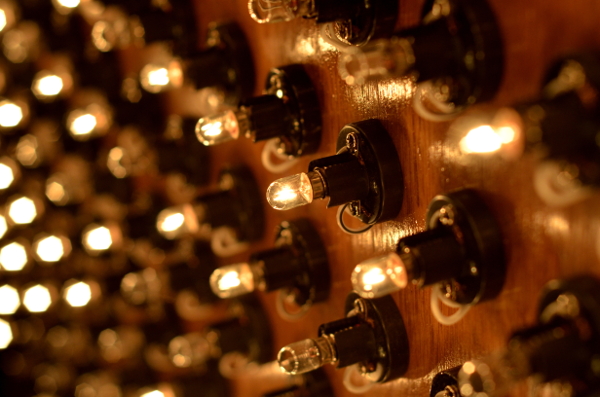
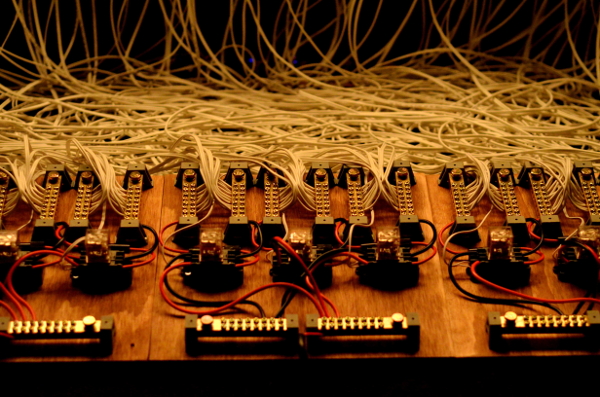
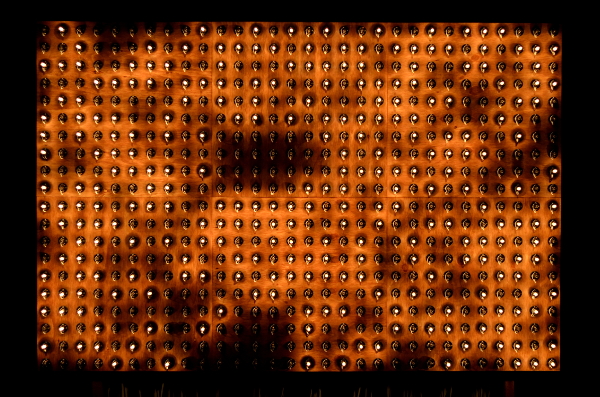
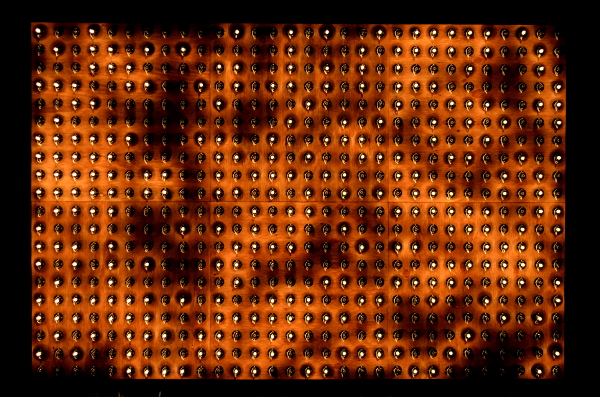





(2015)
Polished ply wood, bakelite, incandescent globes, relays, wire, microcontrollers
Since the advent of Television, humans have become familiar with what is sometimes termed “static” or “noise” when no signal is received by an analogue TV appearing as black and white dots moving randomly over the whole screen accompanied by a hiss of sorts.
This visual and aural experience is actually the result of radiated electromagnetic noise picked up by the antenna. The source of this noise is mostly created by cosmic microwave background radiation interacting with our atmosphere, mixed with local sources of electromagnetic energy (other appliances, weak TV/radio signals etc).
After prolonged viewing of this random visual noise, humans start to see images in the dots, a phenomenon known as “Pareidolia”. Much like seeing faces in clouds and rocks, these processes reach us on a deep level in the lower functions of our brains.
“Static #1” explores the perception of imagery in randomised visual stimuli, using physical technology from the same time period as the introduction of television in the 1930’s and 1940’s. The movement has been slowed from that of actual TV static, so that further can be read from the randomly generated imagery playing across the 600 incandescent globes.
“Static #1” first exhibited as part of ArtJog 8 international art fair at Taman Budaya, Yogyakarta, Indonesia, June 2015.
